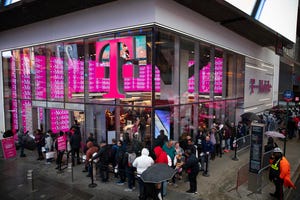Facebook is getting closer than ever to being a full-blown wireless SP.

Facebook is getting ever closer to be being a full-blown mobile service provider, debuting a new software routing system Tuesday for its previously unveiled gigabit radio system.
Facebook 's Open/R software routing system was developed to route traffic sent using its new Terragraph radios and ARIES multiple-input, multiple-out (MIMO) antennas. (See Facebook Debuts Terragraph & ARIES to Extend Wireless.)
This system uses runs over the public 60GHz band with multiple possible signal paths. 60GHz is short range, subject to atmospheric conditions, and isn't good (to put it kindly) at penetrating walls or foliage. A smart routing protocol is essential for finding the best signal path for the data streams. This is ostensibly what Facebook has developed developed Open/R for.
"Open/R was originally designed as a shortest-path routing system to power Terragraph, our multi-node wireless network that delivers high-speed internet connectivity in dense urban areas via short-hop transmission between small nodes," Facebook said in a blog post
Want to know more about 5G? Check out our new 5G site here on Light Reading.
60GHz could end up being one of the millimeter wave frequencies used for 5G services in the future. In fact, the entire Terragraph/ARIES project has the feel of a proto-5G system, exploiting multi-MIMO technology, and promising multi-gigabit links. (See 60GHz: A Frequency to Watch.)
Open/R will do more than just find the best routing path for high-speed wireless. Facebook says it has re-used as much open source code as possible "and we have successfully adapted the platform for use with other parts of our networking infrastructure."
"Open/R makes it possible to prototype and deploy new network applications much more quickly than with the industry’s standard development process," Facebook adds.
The company says it will work out the best approach to introducing the software to the open source community and the Telecom Infra Project (TIP) for broader use. (See Facebook TIPs Telcos Towards Open Source Networks.)
— Dan Jones, Mobile Editor, Light Reading
About the Author(s)
You May Also Like











